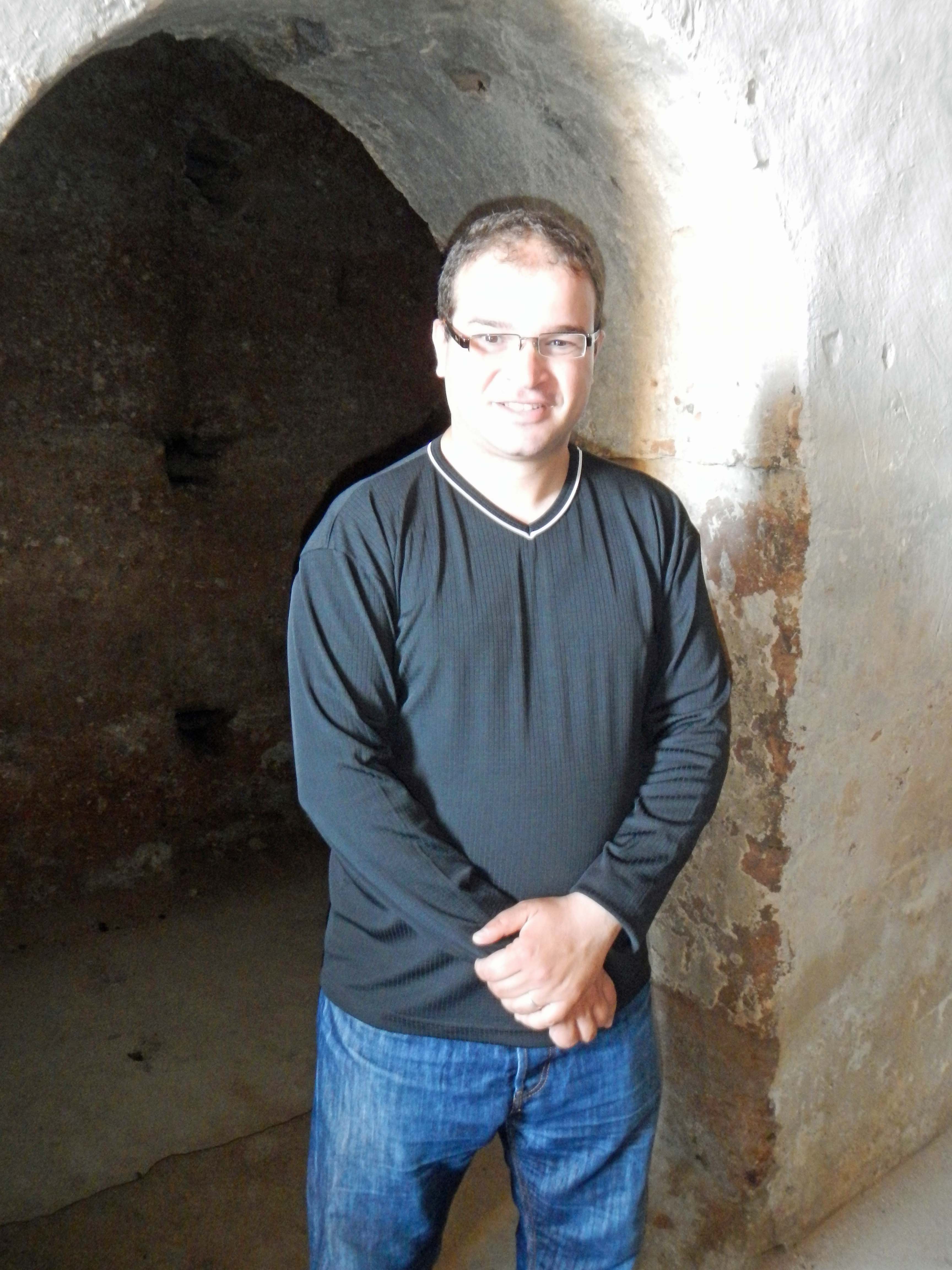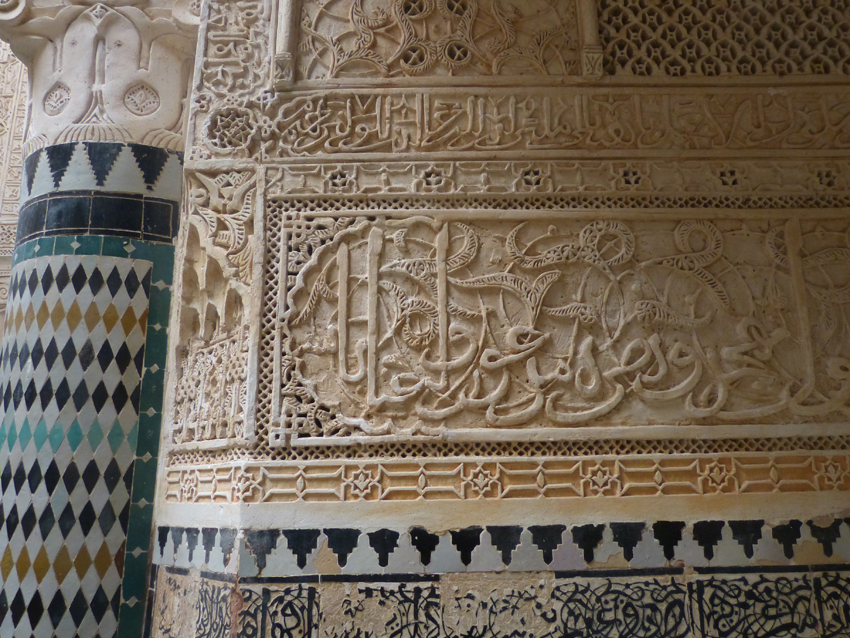Last Updated on June 24, 2019 by PowersToTravel
Meet our guide Mohamed Krounbi, the historian at Salé, a small community near Rabat, on the northwest coast of Morocco. He was our guide for several hours, taking us from the Grand Mosque to riad, to medersa, to city walls, to the Bab (gates), and out to the fort by the sea. He is passionate about his town and its history.
We didn’t know enough to request this tour. After all, what is Salé? It’s not on the list of Moroccan must-see sights. However, Sun Trails considered it to be a proper start to the trip. We are so happy with their decision.
I wish we had arranged for one more day in our vacation. Taking the tour on our very first day in Morocco, without the benefit of a night’s sleep, was not the wisest decision. The guided tour, we came to realize, was to be one of the highlights of our trip – the insight into the history and customs helped us to understand the sights which were to come. We still quote historical tidbits to our friends. We now wish that we had been able to give Mohamed our best, as he certainly gave us his best.
Salé? Why would we go there? We now know – to have a personal, detailed, accurate and insightful lesson in the unique history of the area, Morocco and the Arabic world. As Mohamed told us, Salé shows us the original, and unrestored features of Moroccan life – the riad, the mederasa, the city walls and gates, and then amazes us with the fort, the corsairs and pirates. Yes, we saw many of those features elsewhere and encountered other guides, but none compared with Mohamed and his excellent knowledge and perspective as an historian.
We entered into the medina, and peered through the windows into the women’s prayer area. The entire area was filled with statues of saints, Moulay. In early years saints seemed to appear on every bush, numbering at least three thousand. In the 1700’s they finally stopped creating saints. I wonder why? I’m sure if I had been more attentive and awake I would have heard and could have recorded the answer.
We next peered into the courtyard of the Grand Mosque. The mosque was historically unusual and contained a huge library, at one time the largest library in Africa. We were not allowed into the mosque itself for in Morocco only Muslims are allowed to enter the mosques. This law has a long history peppered with the French and Moroccan tensions. We reluctantly moved on to the next historic site.
Mohamed led us slowly into the riad. A riad is a family home with unique Moroccan and Arabic features. The outside of the house is without windows, located along the alleyways of the medina. Privacy is a cultural value, and no one is given access to see within the home. A small shuttered window is inset in the large wooden door through which the family member inside the house can view the visitor without revealing himself. Once permitted in, the visitor finds himself in a small corridor which does not allow him to see into the house itself. A small foyer might allow him to wait for his host, leaving the women and children their privacy.
Family members enjoy the bright garden set at the center of the square courtyard. It is also called the Garden of Paradise, and often includes a fountain. The rooms of the house surround the courtyard. No windows open to the street side, just to the courtyard. Women lived almost their entire lives within the four walls of the riad. Mohamed told us that the women only left the riad they were born in when they move to the riad of their husband. (I wish I could ask him about the apparent contradiction of this fact with the women’s prayer area we had recently left, with its 3000 saints. Perhaps a different time period?)
The height of the riad walls were an important cultural characteristic for both the family and for the community. Because the family depended on the sun above for all brightness in the riad, it would have been an offense for a neighbor to build a higher wall which might cast a shadow over the garden. As we looked out over the medina later from the city walls we could see the uniformity of the walls. In other cities such as Fes and Marrakech we noted how some modern construction, particularly hotels, did cast a shadow over its smaller neighbors, however Salé retained its original design.
In the evenings women would go up on the riad rooftop for fresh breezes and to talk to the neighboring women on their rooftops across the narrow alley. This was the only social contact women had. If the roofs were not level, that women’s community would not have existed.
The ground floor of the riad would be used primarily in the summer. The stone and tile floors would be cool, and the heat would rise to the higher floors, leaving the ground floor cooler. In the winter, when it was cold, the family would move to the higher floors to benefit from the warmth.
We loved our riads in Morocco. How many experiences would we have missed, if we had decided to stay in hotels instead of these guest houses! However, as I would sit in our riad guest room, and look out its window to the central garden, at times I would feel sad, and breathless, thinking of the earlier generations of Moroccan women, living only within the four walls of the riad.
Our guide, Oualid, had described the very forward-looking policies of his king – women’s rights and education. Indeed, women drive cars, hold responsible jobs, are not forced to dress in particular fashions. It was a fascinating juxtaposition of history and modernity. Perhaps an outsider arriving into New England, after reading about the Pilgrims, Puritans and the Salem Witch Trials, might feel similar feelings of stifled breathlessness as he or she compared the old oppressive Massachusetts Colony with the bustling technology corridor along Rt 128.
From the riad, Mohamed took us to the Medersa de Merinides, a school begun in 1333 for the sons of dignitaries. We gazed in wonder at the fantastic plasterwork, frescos and wood carvings in the large central square and the lecture halls. Mohamed explained that according to the Koran, man was not permitted to draw or create the likeness of man (or beast?), therefore the frescos were geometric shaped, with no men or animals to be found among them. We wandered in the prayer hall, lecture hall and up into the dormitories, the little cells where the boys and young men would study.
From the quiet of this small but historically significant alleyway, Mohamed led us to the Bab Mrisaa, one of seven, I believe, gates of Sale. At the Bab Mrisaa the storyline began to twist, the clerics and students faded and the Barbary Pirates emerged, ships and gold flowed with the river through the Bab…
Related Links
Wikipedia page on the Grand Mosque
Sun Trails tours – very highly recommended
Check out this article of mine too:
Morocco Travel Blog – Itinerary, Reviews and Diabetic Travel Tips









